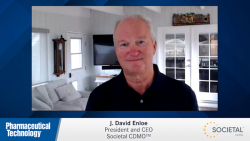
OR WAIT null SECS
- About Us
- Advertise
- Contact Us
- Editorial Info
- Editorial Advisory Board
- Do Not Sell My Personal Information
- Privacy Policy
- Terms and Conditions
© 2025 MJH Life Sciences™ , Pharmaceutical Technology - Pharma News and Development Insights. All rights reserved.
Anticounterfeiting Success in the UK
In the last five years, the UK’s Medicines and Healthcare products Regulatory Agency (MHRA) has seized counterfeit drugs worth more than £25 million ($41 million), but the war isn’t over yet.
In the last five years, the UK’s Medicines and Healthcare products Regulatory Agency (MHRA) has seized counterfeit drugs worth more than £25 million ($41 million), but the war isn’t over yet. Counterfeit products are still a threat to the UK, which is why the agency has launched a new anticounterfeiting strategy called the Falsified Medical Products Strategy 2012–2015. The strategy includes several measures centred around prevention, incident management and investigation.
Prevention. The MHRA will implement this using a combination of market surveillance and testing, vigilance at UK ports, pharmacovigilance and establishing networks to facilitate exchange of information and cooperation. In addition, the agency will communicate the danger of counterfeits.
Incident management. Upon receiving a report of counterfeit medicines, the MHRA’s immediate action will involve conducting an initial assessment quickly, with the focus, of course, being on minimising the risks to public health. Working relationships with relevant public or private entities will be crucial.
Investigation. All cases involving reports of falsified medical products to the MHRA are investigated, particularly with regards to where the product came from and then tracing payments through bank accounts. The MHRA believes that prosecution and confiscation of any financial proceeds from counterfeit medicines is one way of making fake medicines a less attractive option for criminals.
Winning the counterfeit war
This is the second such strategy that the MHRA has implemented. The first was launched in November 2007 following several incidents of falsified products entering the UK’s regulated supply chain. A significant supply chain breach occurred in early 2007 when more than 2 million doses of fake medicines for the treatment of prostrate cancer, heart disease and schizophrenia were imported into the UK under the guise of parallel-traded products. Of these, 700,000 reached pharmacies and patients.
Traditionally, counterfeit medicines have been most prevalent in developing countries where supply chains tend to be less regulated. Several initiatives have been launched to try and curb the occurrence of counterfeits, but it’s frightening to hear that counterfeiters are adapting accordingly and even learning how to get their products into the heavily regulated supply chains of Europe and other industrialised countries. Recently, for instance, counterfeit Avastin was found in the US.
Fortunately for those of us in developed countries, it’s rare that counterfeit products reach patients via the legitimate supply chain. In the UK, there have been 10 instances of counterfeit medicines reaching the pharmacy and patient level since 2004, and the MHRA added that the incidents of such medicines has declined since 2007. One of the main sources of counterfeit medicines, however, is illegal websites. The World Health Organisation has estimated that 50% of medicines available from sites that conceal their physical address are counterfeit, and there are thousands of these websites. In two different anticounterfeiting operations involving the MHRA in 2010 and 2011, around 14,000 websites advertising fake medicines were taken down or suspended. The operations also resulted in the seizure of more than 4.5 million doses of counterfeit medicines.
In recent years, the MHRA has also reported on several successes in battling counterfeit medicines. In 2008 and 2011, for instance, falsified medicines were intercepted at the wholesale level before they reached pharmacies. Most recently, Simon Martin Hickman was ordered to pay a confiscation order of £14.4 million ($23.4 million). Hickamn was convicted in 2009 for selling and supplying fake and unlicensed medicines, and money laundering to the value of £1.4 million ($2.3 million).


